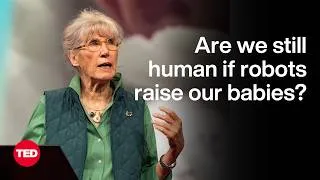请双击下面的英文字幕来播放视频。
翻译人员: Lipeng Chen
校对人员: Yolanda Zhang
00:06
In the 16th century, Flemish physician
Andreas Vesalius
0
6778
4100
十六世纪,弗拉芒医生
安德烈 · 维萨里(Andreas Vesalius)
00:10
described how a suffocating animal
could be kept alive
1
10878
3750
描述了通过将管子插入气管
并向肺部吹入空气,
00:14
by inserting a tube into its trachea
and blowing air to inflate its lungs.
2
14628
6741
让窒息的动物活下来的方法。
00:21
In 1555, this procedure didn’t warrant
much acclaim.
3
21369
4173
在 1555 年,这种方式
并未得到多少认可。
00:25
But today, Vesalius’s treatise
is recognized
4
25542
3360
但如今,维萨里的论述被认为是
00:28
as the first description
of mechanical ventilation—
5
28902
3870
首次对于机械呼吸机的描述——
00:32
a crucial practice in modern medicine.
6
32772
3400
这是当代医学中一项重要的治疗手段。
00:36
To appreciate the value of ventilation,
7
36172
2970
要理解呼吸机的价值,
00:39
we need to understand how
the respiratory system works.
8
39142
3870
我们需要了解呼吸系统是如何运作的。
00:43
We breathe by contracting our diaphragms,
which expands our chest cavities.
9
43012
5759
我们通过收缩横膈膜来扩张胸腔呼吸。
00:48
This allows air to be drawn in,
inflating the alveoli—
10
48771
5317
于是空气被吸进来,充满肺泡——
00:54
millions of small sacs inside our lungs.
11
54088
4297
肺泡是我们肺部成千上万的小囊。
00:58
Each of these tiny balloons is surrounded
by a mesh of blood-filled capillaries.
12
58385
5873
每个这样的小球都被
充满血液的网状毛细血管包围着。
01:04
This blood absorbs oxygen
from the inflated alveoli
13
64258
4817
血液从充气的肺泡中吸收氧气,
01:09
and leaves behind carbon dioxide.
14
69075
3470
并释放二氧化碳。
01:12
When the diaphragm is relaxed,
15
72545
1980
当横膈膜放松时,
01:14
the CO2 is exhaled alongside
a mix of oxygen and other gases.
16
74525
6161
二氧化碳同氧气以及其他气体
一同被呼出体外。
01:20
When our respiratory systems
are working correctly,
17
80686
3170
当我们的呼吸系统正常运作时,
01:23
this process happens automatically.
18
83856
2710
这一过程会自动发生,
01:26
But the respiratory system can be
interrupted by a variety of conditions.
19
86566
4780
但是该过程也会因多种因素中断。
01:31
Sleep apnea stops diaphragm muscles
from contracting.
20
91346
4681
睡眠窒息症会让横膈膜肌肉停止收缩。
01:36
Asthma can lead to inflamed airways
which obstruct oxygen.
21
96027
4649
哮喘会导致气道发炎,
进而阻碍氧气的流通。
01:40
And pneumonia, often triggered
by bacterial or viral infections,
22
100676
5113
肺炎——常常由细菌
或病毒感染引发——
01:45
attacks the alveoli themselves.
23
105789
2860
会攻击肺泡本身。
01:48
Invading pathogens kill lung cells,
24
108649
2980
外来病原体会杀死肺细胞,
01:51
triggering an immune response
that can cause lethal inflammation
25
111629
4515
引发免疫反应,可能会导致致命的炎症
01:56
and fluid buildup.
26
116144
1930
和肺部积液。
01:58
All these situations render the lungs
unable to function normally.
27
118074
5214
所有这些情况
都会让肺部无法正常运作。
02:03
But mechanical ventilators
take over the process,
28
123288
3880
但是机械呼吸机替代了这一过程,
02:07
getting oxygen into the body
when the respiratory system cannot.
29
127168
4787
在呼吸系统无法正常工作时
让氧气进入身体。
02:11
These machines can bypass
constricted airways,
30
131955
3430
呼吸机可以绕过受阻的气道,
02:15
and deliver highly oxygenated air
to help damaged lungs diffuse more oxygen.
31
135385
6700
传递富氧空气来帮助
受损的肺扩散更多氧气。
02:22
There are two main ways
ventilators can work—
32
142085
3200
呼吸机有两种主要的工作方式——
02:25
pumping air into the patient’s lungs
through positive pressure ventilation,
33
145285
4881
通过正压式呼吸
将空气冲入病人肺部,
02:30
or allowing air to be passively drawn
in through negative pressure ventilation.
34
150166
5786
或通过负压式呼吸让空气被动吸入。
02:35
In the late 19th century,
35
155952
1850
十九世纪晚期的呼吸机技术
02:37
ventilation techniques largely
focused on negative pressure,
36
157802
4000
主要为负压式呼吸,
02:41
which closely approximates
natural breathing
37
161802
2650
这一过程模拟了自然呼吸,
02:44
and provides an even distribution
of air in the lungs.
38
164452
4439
并保证了肺部均匀的空气分布。
02:48
To achieve this, doctors created
a tight seal around the patient’s body,
39
168891
5305
为了实现这一目标,医生会
在病人身体周围构造密闭空间,
02:54
either by enclosing them in
a wooden box or a specially sealed room.
40
174196
6367
比如将病人放在木盒
或特殊的密闭房间内。
03:00
Air was then pumped
out of the chamber,
41
180563
2624
然后,空气从密室中被吸出,
03:03
decreasing air pressure,
and allowing the patient’s chest cavity
42
183187
3840
降低气压,使得病人的胸腔
03:07
to expand more easily.
43
187027
2580
能更容易扩张。
03:09
In 1928, doctors developed
a portable, metal device
44
189607
5095
在 1928 年,医生发明了
一种便携式金属装置,
03:14
with pumps powered
by an electric motor.
45
194702
3666
气泵由电动机供能。
03:18
This machine, known as the iron lung,
46
198368
2990
这一装置,也就是俗称的“铁肺”,
03:21
became a fixture in hospitals
through the mid-20th century.
47
201358
4788
成为了二十世纪中期
医院中的常备装置。
03:26
However, even the most compact
negative pressure designs
48
206146
4020
但是,即使是最小巧的负压式呼吸机
03:30
heavily restricted a patient’s movement
49
210166
2380
也会大大限制病人的移动,
03:32
and obstructed access for caregivers.
50
212546
3790
妨碍看护人员的工作。
03:36
This led hospitals in the 1960’s to shift
towards positive pressure ventilation.
51
216336
6001
这使得医院在六十年代
转而开始使用正压式呼吸机。
03:42
For milder cases,
this can be done non-invasively.
52
222337
4000
对于较轻的病症,正压式呼吸
可以通过非侵入的方式实现。
03:46
Often, a facemask is fitted
over the mouth and nose,
53
226337
3390
通常用面罩覆盖口鼻,
03:49
and filled with pressurized air
which moves into the patient’s airway.
54
229727
5145
并将加压空气注入病人的气道。
03:54
But more severe circumstances
55
234872
2100
但对于更加严重的状况,
03:56
require a device that takes over
the entire breathing process.
56
236972
4837
则需要能够接管整个呼吸过程的装备。
04:01
A tube is inserted
into the patient’s trachea
57
241809
3420
一根管子会被插入病人的气管,
04:05
to pump air directly into the lungs,
58
245229
2730
向肺部直接打入空气,
04:07
with a series of valves
and branching pipes
59
247959
3090
并通过一系列的气阀和支管
04:11
forming a circuit for inhalation
and exhalation.
60
251049
4000
形成吸气和呼气的回路。
04:15
In most modern ventilators,
61
255049
1830
在最现代的呼吸机中,
04:16
an embedded computer system
62
256879
2050
内嵌的电脑系统
04:18
allows for monitoring the patient’s
breathing and adjusting the airflow.
63
258929
4507
可以监控病人的呼吸,并调整气流。
04:23
These machines aren’t used
as a standard treatment,
64
263436
3784
这些机器并不是常规治疗手段,
04:27
but rather, as a last resort.
65
267220
2580
而是最后的救命稻草。
04:29
Enduring this influx of pressurized air
requires heavy sedation,
66
269800
5245
忍受加压空气的流入
需要大剂量的镇定剂,
04:35
and repeated ventilation
can cause long-term lung damage.
67
275045
4217
而且重复的换气可能会导致
长期的肺部损伤。
04:39
But in extreme situations,
68
279262
2406
但在极端情况下,
04:41
ventilators can be the difference
between life and death.
69
281668
3603
呼吸机就是生与死的差别。
04:45
And events like the COVID-19 pandemic
70
285271
2790
譬如新冠肺炎大流行的情况
04:48
have shown that they’re even more
essential than we thought.
71
288061
3980
就证明了它们比我们想象的更重要。
04:52
Because current models
are bulky, expensive,
72
292041
3060
因为现有的呼吸机模型笨重且昂贵,
04:55
and require extensive training to operate,
most hospitals only have a few in supply.
73
295101
6802
还需要大量的训练才能安全操作,
大部分医院只配备了少量几台呼吸机。
05:01
This may be enough
under normal circumstances,
74
301903
3050
这在一般情况下可能够用了,
05:04
but during emergencies,
this limited cache is stretched thin.
75
304953
4244
但在紧急情况下,
这样的配置就捉襟见肘了。
05:09
The world urgently needs more low-cost
and portable ventilators,
76
309197
5049
世界亟需更多廉价的便携式呼吸机,
05:14
as well as a faster means
of producing and distributing
77
314246
4040
以及能够更快速的生产和分配
05:18
this life-saving technology.
78
318286
2246
这种救命技术的手段。
New videos
关于本网站
这个网站将向你介绍对学习英语有用的YouTube视频。你将看到来自世界各地的一流教师教授的英语课程。双击每个视频页面上显示的英文字幕,即可从那里播放视频。字幕会随着视频的播放而同步滚动。如果你有任何意见或要求,请使用此联系表与我们联系。







